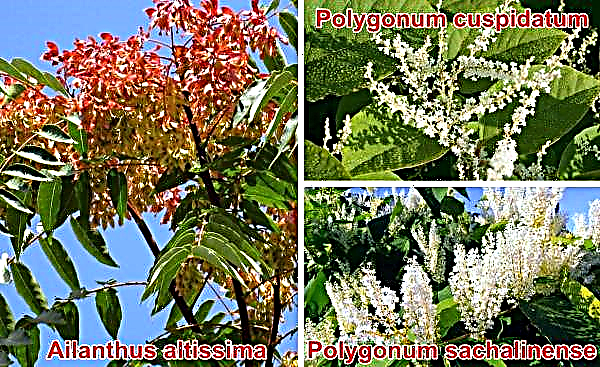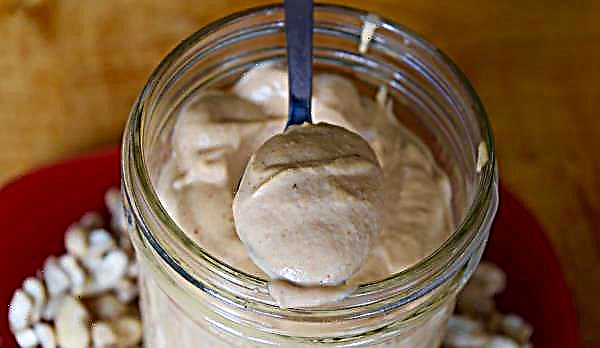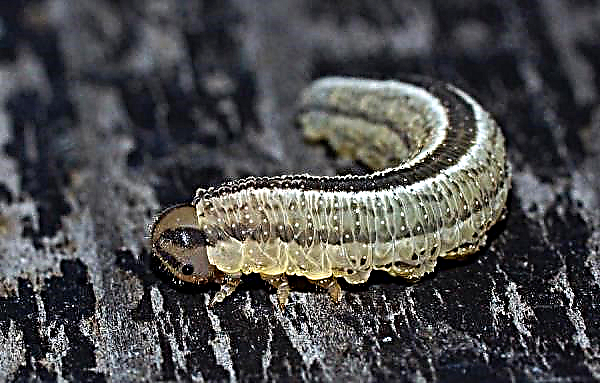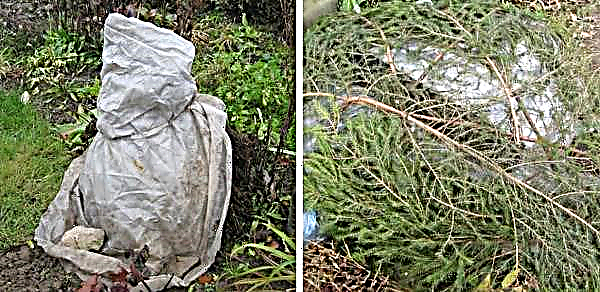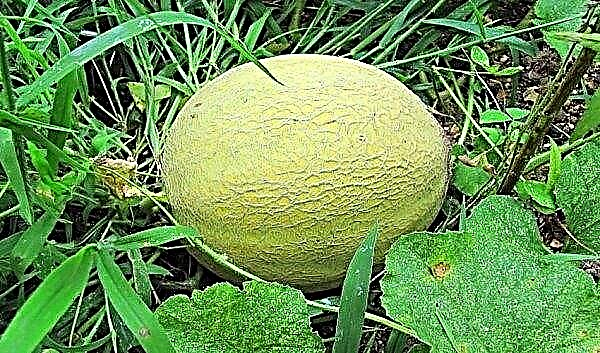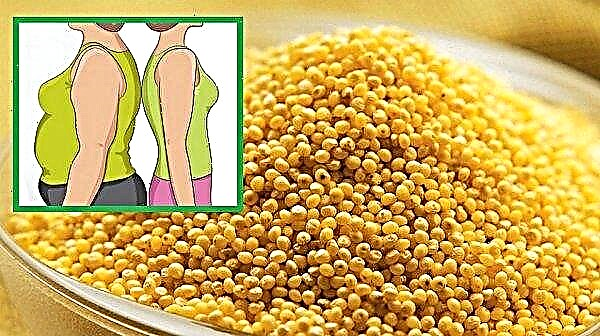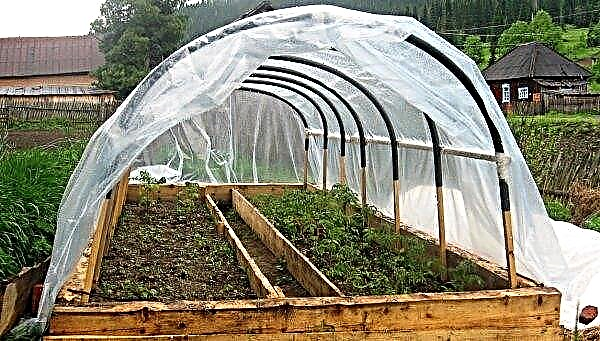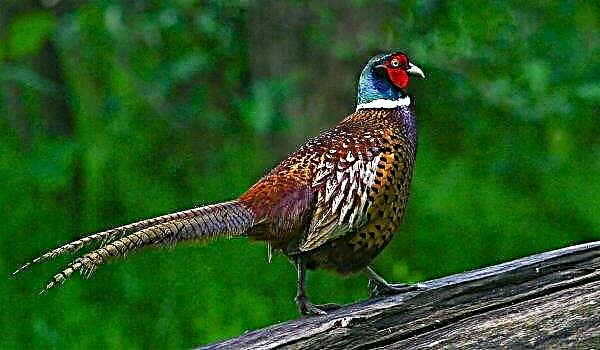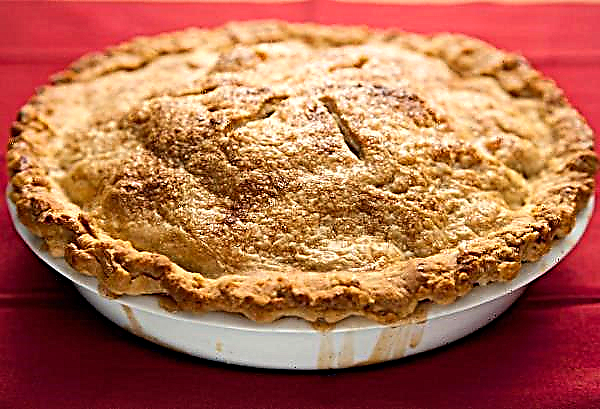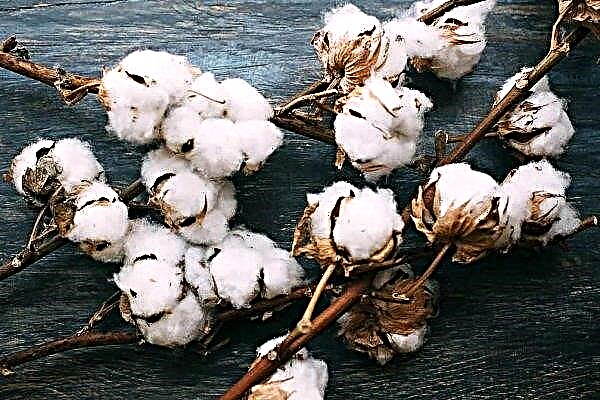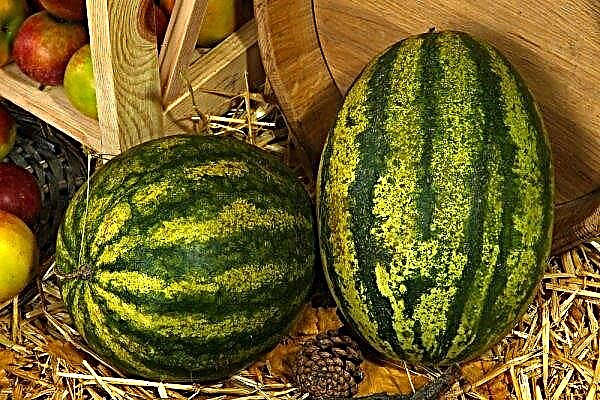Parthenocarpic hybrids of cucumbers, whose ovary does not depend on weather conditions and pollination, are popular among gardeners. A variety of Dutch breeding “Pasalimo F1” was introduced into the state register of the Russian Federation in 2005 and is recommended for summer residents, household plots and small farms. It can be grown in different regions. Consider what is a variety of cucumbers "Pasalimo F1", its advantages and disadvantages, how to plant and grow it, the rules for harvesting.
Description and characteristics of the variety
The Pasalimo F1 cucumber variety is a parthenocarpic hybrid and does not need pollinators. Ripens in the early stages - from the appearance of seedlings to the collection of the first cucumbers the time interval is only 40 days. It is suitable for growing in both protected and open ground. It can bear fruit almost to frost.
This is a medium-sized indeterminate variety with predominantly female flowers. It forms in each node from 3 to 6 cucumbers 6–9 cm long. The fruits are cylinder-shaped, dense green with medium tubercles and white spines. They have barely noticeable light stripes. Cucumbers do not outgrow, they are crispy and without bitterness, suitable for picking gherkins, pickling and pickles, fresh consumption.Did you know? In fact, 95% of the cucumber consists of pure water. There are very few calories in it - only 15 kcal / 100 g. This raw vegetable is very useful in dietary nutrition.
Productivity reaches 100–120 t / ha. This hybrid is not affected by brown spotting, cucumber mosaic virus and powdery mildew.

Advantages and disadvantages
- The advantages of the variety of cucumbers "Pasalimo F1" include:
- stable high yield, independent of weather and pollinators;
- early ripening;
- extended fruiting period;
- universality of use;
- marketable condition;
- good transportability and durability;
- lack of bitterness.
Optimal landing times
Planting time largely depends on the climate of the growing area and method - seedlings or seeds. When sowing seeds, it should be borne in mind that it is necessary to sow in open beds when night temperatures will not already drop below + 12 ° С. In general, you can plant seeds of early varieties in the beds until mid-summer.
With the seedling method, it should be borne in mind that seedlings will need to be planted in a permanent place a month after sowing. At the same time, the temperature of the soil should not be lower than + 13 ° С. Seedlings of cucumbers when overgrowing poorly take root in a new place, so you do not have to rush with planting seeds. Seedlings are ready for planting in the presence of 2-3 true leaves - this condition is reached at three weeks of age.
In central Russia, such temperatures are usually set in early June, so the seeds are sown for seedling cultivation only in late April - early May. The north, the later they do it later, and earlier in the south. In warm regions, cucumbers are usually grown, sowing seeds directly on unprotected beds in the tenth of April.
Seedlings are usually planted in the greenhouse before May 15. The optimum temperature for this crop is considered to be the temperature of the soil in sheltered ground not lower than + 16 ° C at night and + 18 ° C during the day.
Ways to plant cucumbers
In the southern and central regions, the Pasalimo F1 cucumber variety can be sown directly into the ground. In the northern regions and for the collection of early products they are grown using seedlings.
Seedling method
Cucumber seedlings can be grown indoors.
Soil requirements and tank sizes
Cucumbers need light, nutritious soil. You can buy universal soil in an agricultural store, or you can make it yourself: for example, mix turf, compost, peat and sand (2: 2: 1: 1). A little ash or mineral fertilizer (50 g of azofoska per 10 l) can be added to the soil mixture. A home-made mixture must be decontaminated by pouring it with manganese or a solution of copper sulfate.
The containers are taken very different - peat pots and tablets, special trays, cassettes, individual pots. Junk materials are often used as containers for seedlings - plastic bottles, packaging made from milk and kefir. They are cut off, drainage holes are made in them, drainage made of polystyrene, broken brick or expanded clay is filled up, and then the prepared soil. It is not recommended to plant cucumbers in containers less than 8 × 8 cm.Important! Cucumbers cannot be grown in crates. Each plant should have its own capacity, since this culture does not tolerate unnecessary transplants.
Preparation and technology for sowing seeds
Seeds in packaging from a good producer usually no longer require preparation for planting in the form of rejection or disinfection. They can be planted directly in the prepared soil or carry out before this procedure of germination or hardening.
Germinate seeds, wrapped in moist gauze and placed in a warm place. The moisture content of the material is maintained constantly by covering the container with a lid. After a couple of days, the roots should appear in the seeds - biting specimens can already be planted.
Hardening of seeds will allow plants to adapt to lower temperatures. For this, the seed material is wrapped in a damp cloth and kept in the refrigerator for 36 hours.
If you bought the seeds by weight, they must first be disinfected in a weak solution of potassium permanganate for 30 minutes, and then washed with water.
1–2 seeds are planted in a separate bowl to a depth of 1.5–2 cm. After the appearance of sprouts, they always leave one, the strongest.

Seedling Care
Subsequent seedling care is as follows:
- It is necessary to ensure the temperature regime throughout the day within + 21 ... + 23 ° С, and at night - + 16 ... 18 ° С. Tanks with plants should be located in a well-lit place, but without direct sunlight. Lack of light leads to thinning seedlings - it stretches, so in poor lighting you need to highlight it with LED lamps.
- Watering should be moderately defended at room temperature every day. It is also necessary to carry out spraying with water using a spray gun.
- Feeding should be done at least 2 times. The first fertilizer application is done 14 days after emergence - under the root, along with watering in the morning. For this purpose, it is good to use a urea solution at the rate of 1 teaspoon per 250 ml of liquid. You can also buy ready-made fertilizers in the garden store ("Fertility", "Nursery"). The second top dressing is performed when 2 true leaves appear. To do this, take 1 tbsp. tablespoon of wood ash, 1 teaspoon of Nitrofoski, 3 liters of liquid. Pour about 200-250 g under one plant.

Planting seedlings in a permanent place
Seedlings of cucumbers are ready for planting in the soil within 20-25 days after germination. Landing is carried out closer to the end of spring, when frost on the soil is no longer predicted. Soil must warm up to +14 ... + 16 ° С. Air temperature should be within + 18 ... + 21 ° С. In the greenhouse, planting is done earlier at the same temperature indicators. The day before planting, seedlings must be watered.
Landing patterns can be different. When planting seedlings in rows, the distance between them is about 1 m, and between the specimens for planting - about 30–40 cm. You can also plant in a checkerboard pattern: in this case, the distance between the plants is 50 cm wide, and about 30 cm. It is better to water the soil before planting. As cucumbers grow, garter shoots are made on espaliers.Important! Seedlings before planting in the ground must be hardened. For this purpose, it is taken out into the open air: first, for several hours, and then time is gradually increased.

Reckless way
To plant the treated seed directly into the ground, it is important to choose the right place for planting. First of all, crop rotation must be observed: you cannot plant cucumbers where beets, pumpkins, squash or cucumbers were the predecessors. But the areas where potatoes, tomatoes, cabbage used to grow well are suitable. It is advisable to choose a site that is well protected from gusts of wind, but well-lit by sunlight. Cucumbers do not like shading. They can tolerate slight shading only in the southern regions, where the sun is hot in summer.
A bed for planting is prepared in advance, preferably in the fall. First, the site must be cleaned of residual vegetation and weeds. Then organic fertilizers are introduced into the soil - mullein (about 5–10 kg per 1 m²), as well as superphosphate and potassium salt (30 g and 20 g per 1 m², respectively).
Did you know? Cucumbers are used in cosmetics. They refresh the complexion, moisturize the skin and smooth it, help relieve swelling from the eyelids.
If such top dressing was not made in the fall, then in the spring, when digging a plot for fertilizing the soil, use rotted manure or bird droppings, humus, and also compost. Such fertilizer can be applied immediately to the wells when planting plants. Instead of mineral fertilizers, supporters of green areas use wood ash at the rate of 0.5 liters per 2 m². If the soil on the plot is acidic, it is necessary to apply lime (dolomite flour) at the rate of 0.3-0.5 kg per 1 m².
Sowing seeds is as follows:
- dig a hole or trench 40 cm deep;
- lay on the bottom a layer of rotted manure or humus;
- mix such organic fertilizers with the soil with a shovel;
- moisten the soil with settled water.
 For planting, use the vertical method, when in the future the cucumbers are tied to the trellis installed next to it. With this planting, long but narrow beds are made with gaps between them of about 0.7–1 m. Cucumbers are planted in the bed so that the gap between them is about 9–10 cm. Planting depth is 2-3 cm. Subsequently, excess plants a row is removed and a distance between them of at least 30 cm is left.
For planting, use the vertical method, when in the future the cucumbers are tied to the trellis installed next to it. With this planting, long but narrow beds are made with gaps between them of about 0.7–1 m. Cucumbers are planted in the bed so that the gap between them is about 9–10 cm. Planting depth is 2-3 cm. Subsequently, excess plants a row is removed and a distance between them of at least 30 cm is left.How to care for crops
To get the most out of the Pasalimo F1 variety of cucumbers, you need to take good care of them and harvest them in a timely manner.
Watering and feeding
Pasalimo F1 cucumbers need regular and proper watering. Inadequate watering negatively affects the yield and taste of this vegetable.
It is recommended to water the plants about 1 time in 5-7 days. But it is worth noting that the amount of watering depends largely on weather conditions. In the heat it should be watered more often, every 1-2 days, and when it rains, watering is stopped.
Watering is carried out from the following calculation - for 1 m² or for each adult bush there is about 1 bucket of water. It is best to use the drip method of watering. In sunny weather, it should be watered only under the root, since moisture on the leaves can cause burns from the sun. It is best to carry out this process in the evening hours.
For maximum yield, it is necessary to carry out at least 3-5 dressings for the entire growing season. Lack of nutrients leads to the fact that cucumbers become small, lose their shape, color and taste.
The first top dressing is performed when the first sprouts appear. For this, organic fertilizers are used - rotted manure or bird droppings. Such organics with a volume of 1 liter are diluted in 10 liters of water, 0.5 liter of wood ash, as well as mineral fertilizers (15 grams of urea, 50 grams of superphosphate, 15 grams of potassium sulfate) are added. During fruit ripening, the volume of nitrogen and potassium fertilizers is doubled.
It is also useful to carry out foliar top dressing. To do this, you can spray every 14–20 days with a solution that is prepared from this ratio: 5 g of ammonium nitrate, 10 g of superphosphate and 8 g of potassium sulfate per 10 l of liquid. One bucket with a volume of 10 liters is enough for a 30 m² area with a landing.
Shaping and tying a bush
For proper bush formation, pinching is performed. When 6-7 leaves appear, pinch the main stem over a 5 or 6 leaf - this stops the plant growth in height and promotes the appearance of side lashes, on which the ovary will appear in the future, which will well increase the crop yield.
So that the fruits do not appear on the ground and do not begin to rot, the lashes of the plant must be tied to pre-installed trellises. For their installation, supports of wood or metal are dug into the ground 1–1.2 m high, and a rope or wire is pulled between them. The whips are tied to this design.
Important! As a material for a garter, old women's tights, soft rags or ribbons are used. It is necessary to use only a fabric soft in structure so as not to damage the shoots.
Soil care
After watering, loosening the soil around the cucumbers to a depth of about 5-7 cm should be carried out. This will prevent the appearance of a crust on top of the soil, and will improve the flow of water and air to the crop. Simultaneously with loosening, weeds are removed that draw moisture and nutrients from the soil.
From drying out, and also to prevent the appearance of weed grass, it is recommended to mulch the soil near the bushes. As mulch use straw, peat, sawdust, manure, humus.

Grade Diseases and Pests
Pasalimo F1 cucumbers are resistant to diseases such as powdery mildew, cladosporiosis, and cucumber mosaic.
If you observe crop rotation and carefully care for this plant crop, then no disease is terrible. But watering with cold water, heavy cold rains, lack of solar heat, temperature changes can provoke the appearance of some diseases, including various kinds of rot. To combat such diseases, appropriate chemicals are used (Fitosporin, Bordeaux fluid).
Cucumbers can be affected by pests such as aphids, whiteflies, spider mites, or thrips. When they appear, they use spraying with chemicals such as "Tandem", "ATO Beetle". Folk remedies also help well - spraying with a solution of laundry soap and tobacco.
Harvest Dates
Cucumbers of the variety in question yield 40 days after planting. But the fruit ripening period lasts until the onset of cold snap. During this period, pick cucumbers 3-4 times a week so that they do not interfere with the ripening of new fruits. If you had to skip 1-2 harvests, the cucumbers of the Pasalimo F1 variety do not outgrow, but this can affect the yield.
Did you know? Cucumbers remove "excess" water from the body and prevent its intoxication, and also contribute to the normalization of the water-salt balance.
Parthenocarpic hybrid Dutch breeding "Pasalimo F1" can give stable early crops in open and protected ground, grown seedlings and seedlings. Its fruits are appreciated for the lack of bitterness and for the fact that they do not outgrow, suitable for picking gherkins.


